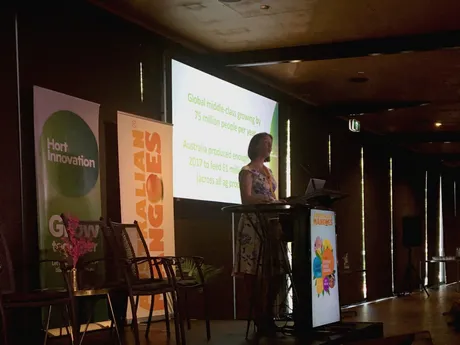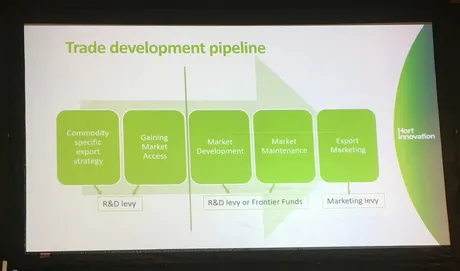There is no problem with demand for Australian produce globally, it is just whether the nation can remain competitive, according to grower-owned research and development company, Hort Innovation.
Trade Manager Jenny Van de Meeberg says Australia's role as an exporting nation needs to be put into perspective, in terms of the market penetration that it can achieve.
"At very best we are a small player on the global stage," she told mango growers. "To have any chance of getting that we must work together as a unified industry. We need to find ways to create maximum possible long-term prosperity to satisfy investor demand. The challenge is that we are a high-cost economy and have limited industry and financial resources in a global context. The national production phase doesn't compete with volume players internationally."
She added that the global middle class growing by 75 million people per year, and will continue at that rate until 2050. To put that in context, Australia produced enough food across all agriculture sectors; grains, dairy, meat, and horticulture to feed 61 million people in 2017.
"The opportunity is to build a strategy based on the concept of premium food and to select markets where Australia has competitive advantage and brand recognition," Ms Van de Meeberg said. "Then we can target very strategically segments within those markets where we identify the cohorts that have both the appetite to consume, but also have a willingness to pay."

At the moment, there are 17 industries that have active trade investments across the 2019-20 year, and Hort Innovation manages two separate panel arrangements to support trade conversations.
"The first is the Trade Assessment Panel (TAP), which is to support the market access prioritisation process," Ms Van de Meeberg said. "The role given to Hort Innovation by the Department of Agriculture and Water Resources (DAWR) is to prioritise across the whole hort sector new market access, or market improvement applications to government. The second is industry Trade Advisory Panel (iTAP), which is an across horticulture panel which comprised mainly of the CEOs of peak industry bodies, and large export focused growers. "
Ms Van de Meeberg says there are currently 19 members on iTAP, and the purpose is to find common positions on cross-horticulture issues in the trade space that affects all exporting industries.
"For example, most recently we have had conversations on maximum residue limits (MRLs)," she said. "MRLs affect all exporting industries, so it makes sense that we start to build strategies across horticulture and not individually."

The industries which start investing levy funds in trade development activities must begin with a commodity specific export strategy, according to Ms Van de Meeberg. The next step is to look at that strategy where it might identify opportunities for further market access and improvement.
"The formal application to TAP, is trying to establish four main things from any applicant," she said. "The first is, does your request align with the export strategy? The second is, does your industry have the supply capability? It would not make sense to allocate resources from DAWR to prosecute something where there was no supply capacity. Thirdly, does your industry have complete Research and Development (R & D) data sets to support the application. R & D data sets refers to a package of information that supports for example, a vapour heat treatment or cold treatment pathway. Finally, is there market demand? Is there some pull through factor for the product that you want to send to that market?"
She says there is a great opportunity for industries to work together in the areas of market development, market maintenance and export marketing, and get better benefit and stretch out the levy investments, by co-investing in certain activities.
"That is where we social all the conversations from iTAP," Ms Van de Meeberg added. "Some of the examples of projects that might come through an iTAP conversation may then be taken up by individual industries or put together in a multi-industry project. They can be inbound or outbound missions that include trade seminars, export education programs or insights of data. Industries will choose what they need, not every industry will have these things, sometimes they will do it alone in specific climates. But when we can, we do it together."
